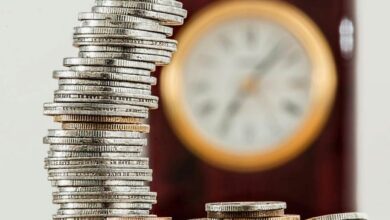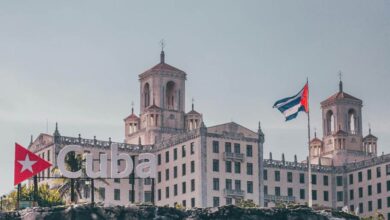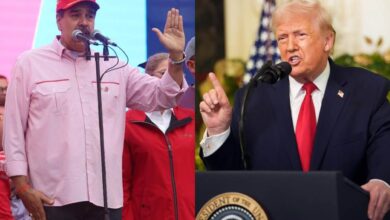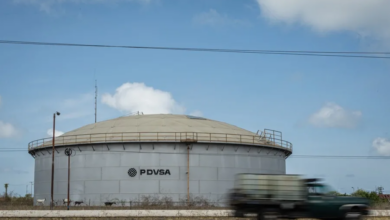Economy 101 with Waffles and Coca-Cola: 6 curious economic indicators
To measure the economic possibilities of a region, experts have used indicators such as GDP or the number of hamburgers that can be purchased with USD $ 50

Historically, experts in economic sciences have developed tools that allow them to compare the progress and economic capabilities of one region in contrast to another, in order to determine who has greater stability and a future projection. Of course, these economic indicators have varied as the economy itself has advanced, and ways of understanding the profound differences that exist between one country and another.
Leer en español: ¿Cómo medir la economía con Waffles y Coca-Cola? 6 índices económicos curiosos
This is how indexes such as GDP or per capita income have been created to perform this type of measurement. Parallel to these indices, which are widely used in the economic analysis of the markets, other indexes have been created that seek to make a more qualitative approach to the phenomena experienced by different countries, through common goods and services.
These economic indicators are based on the concept of purchasing power parity (PPP), which establishes that an equivalent exchange rate between two countries can be established through their goods and services, having a non-monetary reference framework. In this way, the index is able to assess the purchasing possibilities and life conditions of different countries, avoiding the depreciation or inflation differences of a specific currency.
These are the six most curious economic indicators:
Big Mac Index
Created in 1986 by The Economist, the Big Mac Index is perhaps the best known worldwide within this line, both in economic areas and in a more common context. This index aims to put in context a Big Mac hamburger from the well-known chain of McDonald's restaurants and determine how many can be purchased with an established amount of money.
Usually the frame of reference of these indexes is established in relation to the United States and, in this case, it is proposed how many hamburgers can be purchased with USD $ 50. In July 2018, the economic portal ranked Switzerland as the most expensive place to buy a Big Mac with USD $ 6.54, while Egypt was the cheapest with USD $ 1.75. In Latin America, Mexico is the cheapest with USD $ 2.57 for Big Mac, while Uruguay is the most expensive with USD $ 4.47.
KFC Index
A direct debtor of the Big Mac index is the KFC index, which basically has the same principle of approximation to the economy of the regions. This index, proposed in 2016 by the organization Sagaci Research, sought to have a more reasonable service within the context of Africa.
Given that in this continent the presence of McDonald's is low, while KFC is much more widespread, it is much more favorable to perform the analyzes around these products. This index is focused only on the African continent, unlike the Big Mac Index that tries to have a global reach.
iPhone Index
In 2007, CommonWeatlh Bank of Australia produced an index that was also derived from the Big Mac Index: the iPod Index. Considering that these artifacts were manufactured in a single site, under standard conditions, this index was intended to be more reliable than the one proposed by The Economist in 1986.
However, its limitations and the fact that basically, the iPod disappeared from the general picture of the most common goods among Apple users, the index has moved to the iPhone.
This new index, the iPhone Index, also has an important difference: it is based more on the number of working hours that are needed in each country to get one of these phones. In Latin America, according to the UBS group, the city that requires more hours of work to buy an iPhone X is Mexico City, with a total of 637.5 hours, while the one that requires least is Panama with 150 hours.
It may interest you: Celibacy and greediness: This is why catholic priests have no children
Coca-Cola Index
Another index that has a connection with the Big Mac Index is the Coca-Cola Index, although this time in a much more subtle way. This index is more of a theory than an index as such since it deals with the analysis of a phenomenon that occurs in different African countries around the purchase and consumption of Coca-Cola in relation to its political and economic stability.
According to Alexander Cummings, director of the African division of Coca-Cola, in 2008 for The Economist, the instability that Kenya suffered at the time could be traced in sales of the product in the most remote populations, due to its difficult access. This index then talks about the possibility of finding the product and consuming it because there are safe and easily accessible shopping channels.
Waffle House Index
The Waffle House Index moves away from the other indices mentioned since its priority is not to establish economic parallels, but rather to account for the level of risk present in a natural threat. This index, which is used in the United States, was created in 2011 by the Federal Emergency Management Agency (FEMA), after the Joplin tornado.
It use three levels of risk based on the conditions of Waffle House restaurants, and the chances they have of opening again after an emergency: green, where there is no risk or is very low; yellow, where the restaurants do not have electricity or operate with a small generator; and red, where the restaurants are closed.
Christmas Price Index
The Christmas Price Index may be the most curious of all, because of its approach, although it has an entirely economic method, is based on Anglo-Saxon folklore. This index, which was created by the US bank PNC in 1986, takes the elements mentioned in the carol "The Twelve Days of Christmas" and evaluates its price over time.
This methodology is widely used in economic sciences, which is to compare the prices of the same good between one year and another to understand the development of the market.
However, clearly, the goods mentioned in the carol do not pass from a mere divertimento. This index has two modalities: "the price of Christmas", which adds the price of each object mentioned; and "the true cost of Christmas", which assumes that each object is purchased during the twelve days from the day it is mentioned.
LatinAmerican Post | Jorge Ovalle
Translated from "Midiendo la economía con Waffles y Coca-Cola: 6 índices económicos curiosos"





